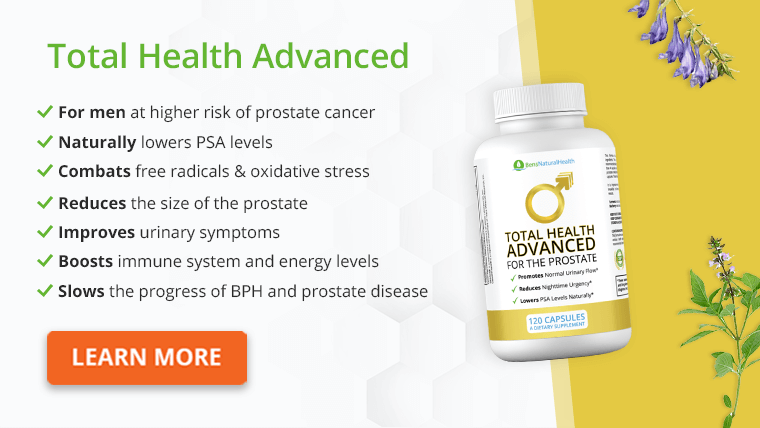The benefits of exercise and its value in maintaining good health are something health professionals profess.
Studies indicate that physical activity is generally safe, feasible, and beneficial for many individuals with cancer even during treatment. [1]
Regular exercise reduces your risk of developing health problems such as heart disease, stroke, and certain types of cancer.
Interestingly, maintaining a regular physical activity routine may contribute to the prevention of certain prostate disorders and promote prostate health.
What is prostate cancer?
Prostate cancer is a disease in which malignant cells form in the tissues of the prostate.
The prostate is a gland in the male reproductive system.
You can find the prostate below the bladder and in front of the lower part of the intestine, the rectum. This organ is just about the size of a walnut and surrounds part of the urethra.
The prostate gland’s primary function is to make the fluid that is part of the semen. Factors that increase the risk of prostate cancer include older age, family history, and race.
Often prostate cancer grows very slowly, and finding and treating it before symptoms occur may not improve men’s health or help them live longer. Thus, prostate cancer is the second most frequent cancer after lung cancer in men worldwide.
It causes about a million new cases each year. It also counts for 3.8% of all deaths caused by cancer in men. [2]
However, emerging scientific evidence suggests a correlation between prostate cancer and exercise. Interestingly, engaging in a few hours of exercise a week may help keep prostate tumors from advancing and may even prevent them from developing in the first place.

Should you exercise during prostate cancer treatment?
According to the American Cancer Society, after a positive cancer diagnosis, healthy eating and an active lifestyle can lower the chances of cancer worsening or returning. [3]
Research shows that exercise is not only safe during cancer treatment; it even improves physical functioning and life quality in many different aspects.
Exercise is vital for preventing cancers. It can also be an essential part of cancer treatment plans.
There is evidence suggesting that consistent exercise can significantly enhance both physical and mental well-being throughout the treatment process. It helps patients reduce pain, depression, and anxiety.
Multiple research studies support the notion that engaging in exercise while undergoing cancer treatment can contribute to patients feeling better and can enhance their strength and energy levels.
Even exercise and physiotherapy programs are tailored to suit you if you were not active before receiving a cancer diagnosis. These exercise programs should meet any individual’s unique needs and ensure they will help them be functioning safely and successfully.

Benefits of exercising during cancer treatment
Prostate cancer patients have several benefits from regular exercise. Several cancer survivors vouch for increasing physical activity as it is associated with a decrease in disease progression and an increase in long-term survival.
Research in the field of cancer has demonstrated the validity of this statement, especially in patients with advanced prostate cancer undergoing androgen deprivation therapy. Interventions involving exercise also extend the life expectancy of men with localized prostate cancer by more than a decade.
Significantly, regular exercise has been associated with reduced blood sugar levels, lower insulin levels, and a decreased risk of prostate cancer. It can also reduce the side effects of common prostate cancer treatments, such as androgen deprivation therapy (ADT) which cause muscle loss, fat gain, and osteoporosis.
Some of the most common benefits are listed below:
Reduces tiredness
Regular exercise can help reduce tiredness levels in patients. Unfortunately, fatigue is widespread in patients undergoing cancer treatment.
However, regular exercise builds muscle mass and improves joint flexibility and general conditioning, which helps overcome the treatment effects.
Prevent blood clots
Long hours of immobility can lead to blood clots, which may be life-threatening in the advanced stages. Exercising ensures proper blood flow all over the body, and it is helpful to avoid blood clots.
Improves mental health
Physical exercise improves the mental outlook of the patient. Cancer therapy can be draining, and it is easy to slip into depression and anxiety. However, exercise can help combat these psychological issues.
Reduces heart disease risk
Regular exercise reduces the risks of heart diseases amongst prostate cancer patients, and decreases the chances of osteoporosis and other chronic conditions, such as heart disease and diabetes.
Other benefits include:
- Prevent the loss of muscle mass and enhance muscle strength
- Enhance your balance to minimize the risk of fall-related injuries
- Prevent weight gain and obesity, which are linked to increased cancer risk
- Improve sleep
- Decrease the amount of time you need to stay in the hospital
- Reduce the risk of other cancers
- Improve the quality of life

What exercise precautions should I take?
Always consult your doctor or health care provider before you begin any exercise program.
The correct information about prostate cancer and exercise is vital.
More guidance is needed on what types of physical activity are suitable for patients depending on disease states and treatments in prostate cancer. Thus, healthcare professionals should recommend tailored activities such as resistance exercises to suit their needs.
Prostate cancer and its treatments can cause specific side effects that may require you to modify your exercise program.
For instance, aerobic exercise is excellent; however, cycling is not recommended for men with prostate cancer because prolonged bicycling can cause the bicycle seat to pressure the perineal area between the scrotum and the anus.
Simple precautions to take
To make sure that your exercise routine is as safe and enjoyable as possible, take these simple precautions:
- Warm-up and cool down correctly.
- Drink plenty of fluids.
- Watch for signs of overheating — headache, dizziness, nausea, fainting, cramps, or palpitations — especially in hot, humid weather.
- Resume exercising after you recover, not when you are ill; give yourself time to work back up to your usual level.
- Let injuries heal. That doesn’t mean you need to give up exercise, though. For example, if you’ve sprained your ankle while jogging, try swimming or other activities that use your arms and keep you off your feet.
- Dress in loose, comfortable clothing that’s appropriate for the weather.
- Pay attention to your surroundings. For example, be cautious if you walk or jog, always face the traffic, and carry a phone.
Also, if you experience any of the side effects below, stop exercising and inform your doctor.
- Fatigue. Physical tiredness can make it harder to exercise vigorously. Monitor your energy levels and adapt your exercises accordingly.
- Myelosuppression. This condition means you will be likely to bruise and bleed. Therefore, you should use caution with exercise machines and equipment.
- Neutropenia. Cancer treatment can cause neutropenia, which can leave you vulnerable to infections, so avoid places that are crowded and not cleaned regularly, like gyms.
- Numbness. Peripheral neuropathy is a common side effect of cancer treatment. It might make it challenging to carry weights safely if it affects your hand, so balance training with tubing or bands should be preferred.
- Lymphedema.
Other conditions: You should also be cautious and confirm with your doctor if you can exercise while having:
- Osteoporosis.
- Bone metastases.
- Cardiopulmonary issues.
Get Your FREE PSA Lowering Diet Plan!
- Naturally lower PSA levels
- Reduce nighttime trips to the bathroom
- Enjoy better bladder control and urine flow
Exercise guide for patients undergoing prostate cancer treatment
Exercise improves general health. A variety of activities is ideal for a safe and effective exercise program during and after cancer treatment.
Typically a complete program should include the following.
Aerobic exercise
This strengthens your heart and lungs. Walking is an easy way to get aerobic exercise.
The typical recommendation for adults is to get at least 150 minutes of moderate exercise. Alternatively, 75 minutes of vigorous-intensity activity each week is also sufficient.
Moderate-intensity activity has been shown to improve cancer-related symptoms. However, it also gives enhanced relief from the side effects of radiation therapy, including extreme tiredness, sleep issues, and psychological problems such as anxiety, depression, and sleep.
In addition, aerobic exercises such as cardiorespiratory fitness help to improve cardiovascular conditioning while keeping the body composition.
Breathing exercises.
Breathing exercises improve shortness of breath or difficulty breathing. It also helps reduce any stress and anxiety.
Stretching
Stretching improves flexibility and posture, increases blood and oxygen flow to the muscles, and helps your body repair itself and its physical function.
Balance exercises
Loss of balance can be a side effect of cancer and its treatment. However, balance exercises can help you regain the function and mobility you need to safely return to your daily activities, preventing injuries, such as falls.
Strength training
Muscle loss often happens when a person is less active during cancer treatment and recovery. It can also help fight osteoporosis, weakening the bones that some cancer treatments can cause.
Strength training will help increase muscle mass and bone density while decreasing body fat. It can be performed with weights, bands, machines, or using one’s body weight. Such exercise will also prevent sarcopenia, which changes your fat-to-muscle ratio.
Kegel Exercises
The muscle surrounding the prostate weakens from cancer treatments such as surgery. One of the results can be urinary incontinence, a loss of bladder control, and sexual dysfunction.
Sexual dysfunction can occur in prostate cancer due to decreased sexual desire and hormonal therapy that blocks testosterone. Also, nerve injury through surgery may increase the frequency of erectile dysfunction.
Kegel exercises can strengthen your pelvic floor muscles. Typically, these muscles support the bladder and bowel and function to stop urine flow.
Kegel exercises are outstanding for men with prostate cancer because they can help control incontinence without medication or surgery and may improve erectile issues and dysfunction.
Conclusion
Physical activity and exercise are critical factors in prostate health to fight the disease and prevent a recurrence. Physical activity improves your physical and emotional health. In addition, it can be essential for managing your weight, maintaining muscle and bone strength, and helping with potential side effects of prostate cancer treatment.
Physical activity means movement of the body that uses energy, such as walking, running, or jogging. It should be moderate or vigorous for health benefits that make you breathe harder and your heart beat faster.
The recommended general physical activity guidelines are at least 150 minutes of moderate exercise or 75 minutes of vigorous exercise a week for cancer prevention. Studies show that those who lead active lifestyles have better survival rates among men with prostate cancer than those who do not.
Fortunately, regular physical activity and exercise positively impact health and prostate cancer. For example, men who exercise only one to three hours of walking each week have an 86% lower risk of aggressive prostate cancer.
Further research has demonstrated three or more hours of vigorous exercise lowered the risk of prostate cancer death by 61%. Prostate cancer survivors also mention that diet and exercise significantly impacted and improved their chances of survival.
Explore More

Prostate Cancer Diet: 10 Foods To Eat and Foods You Should Avoid.







